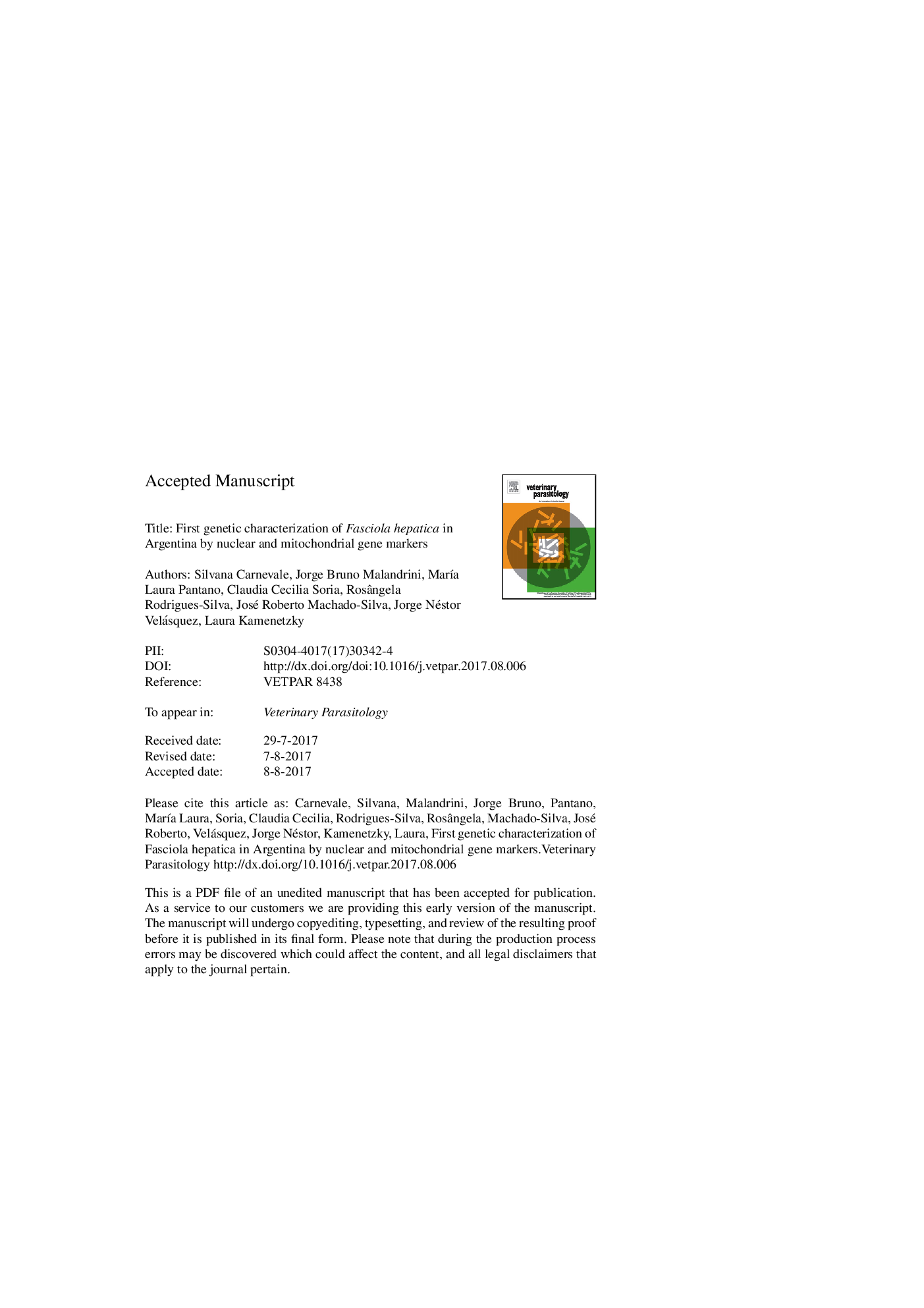| Article ID | Journal | Published Year | Pages | File Type |
|---|---|---|---|---|
| 5545674 | Veterinary Parasitology | 2017 | 22 Pages |
Abstract
Fasciola hepatica is a trematode showing genetic variation among isolates from different regions of the world. The objective of this work was to characterize for the first time F. hepatica isolates circulating in different regions of Argentina. Twenty-two adult flukes were collected from naturally infected bovine livers in different areas from Argentina and used for DNA extraction. We carried out PCR amplification and sequence analysis of the ribosomal internal transcribed spacer 1 (ITS1), mitochondrial nicotinamide adenine dinucleotide dehydrogenase subunits 4 and 5 (nad4 and nad5) and mitochondrial cytochrome c oxidase subunit I (cox1) genes as genetic markers. Phylogenies were reconstructed using maximum parsimony algorithm. A total of 6 haplotypes were found for cox1, 4 haplotypes for nad4 and 3 haplotypes for nad5. The sequenced ITS1 fragment was identical in all samples. The analyzed cox1 gene fragment is the most variable marker and is recommended for future analyses. No geographic association was found in the Argentinean samples.
Related Topics
Life Sciences
Agricultural and Biological Sciences
Animal Science and Zoology
Authors
Silvana Carnevale, Jorge Bruno Malandrini, MarÃa Laura Pantano, Claudia Cecilia Soria, Rosângela Rodrigues-Silva, José Roberto Machado-Silva, Jorge Néstor Velásquez, Laura Kamenetzky,
